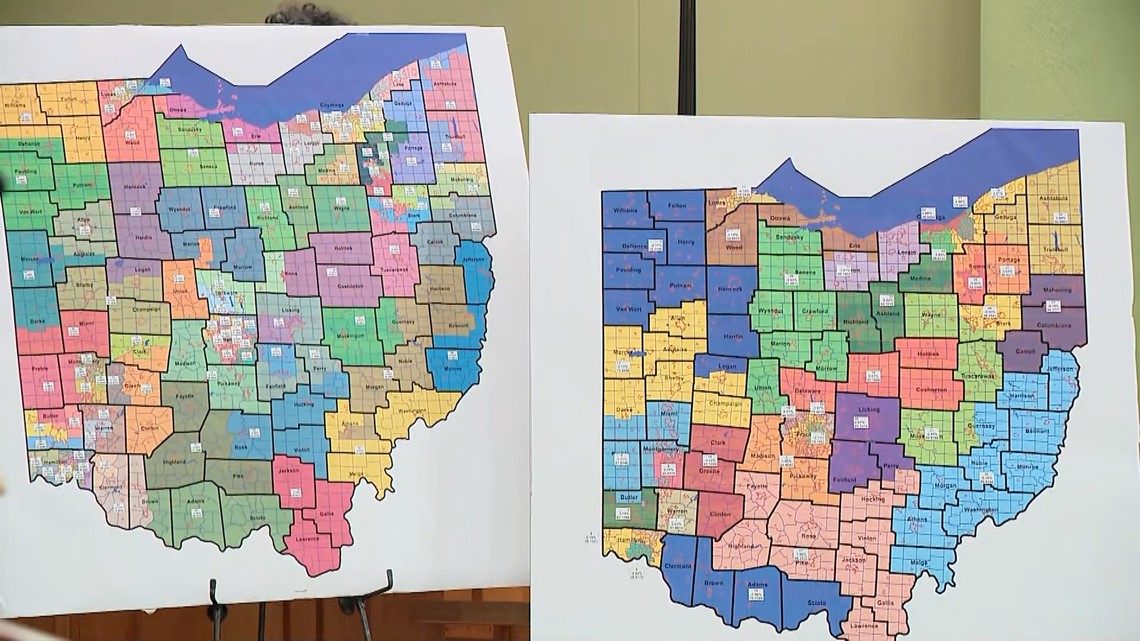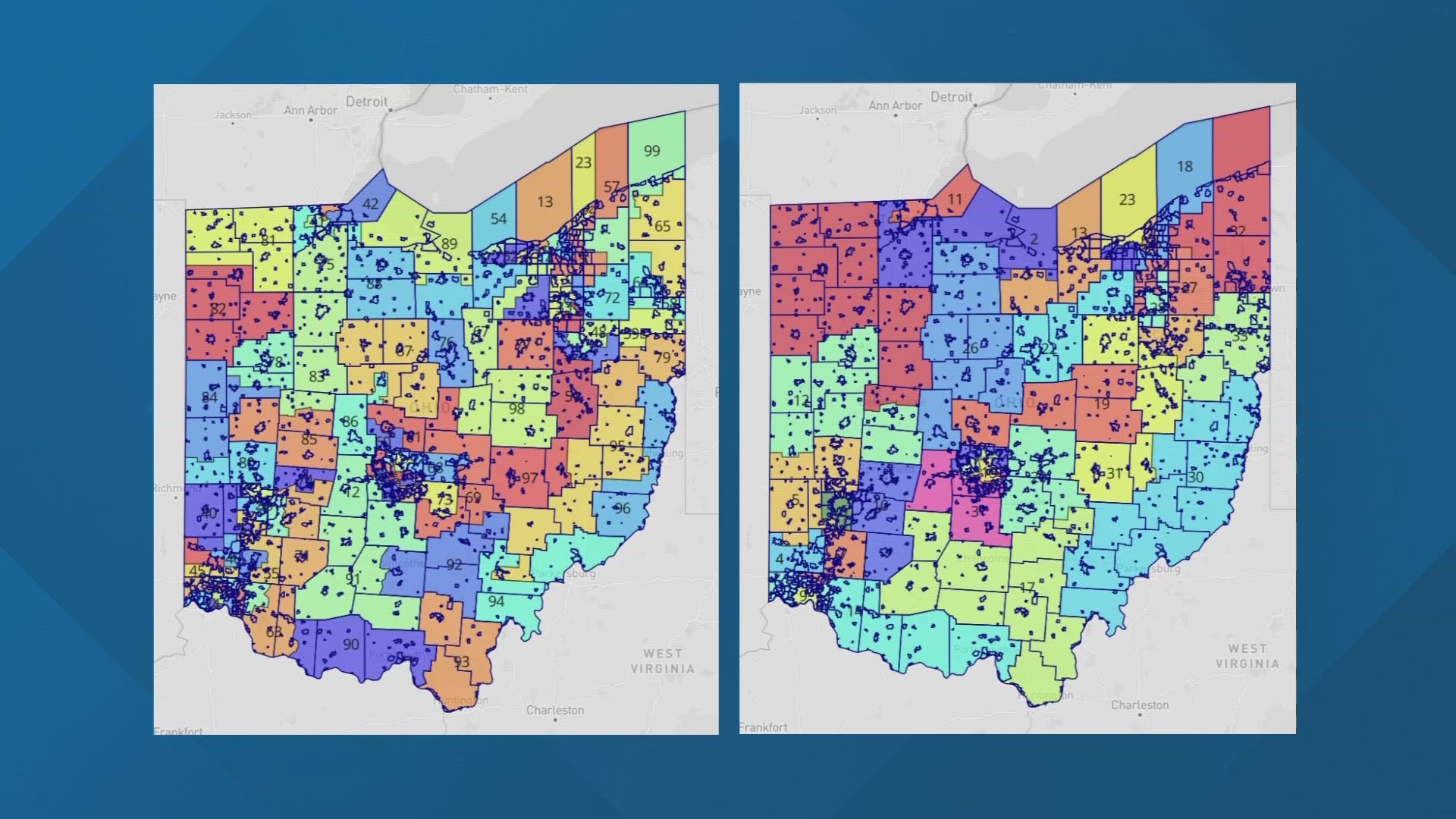COLUMBUS, Ohio — Ohio’s political map-making commission unanimously approved new Statehouse maps Tuesday night, moving a step closer to resolving a long-running redistricting battle.
The state's lengthy saga over the new political boundaries required to be drawn after every U.S. Census has been riddled with lawsuits and repeated court rulings finding previous maps were unconstitutionally gerrymandered to favor the state's leading Republicans.
The new state House and Senate maps are poised to last into the 2030 election cycle, pending legal hurdles, and, like their predecessors, give the GOP an advantage statewide.
Under the plan, Republicans would have an advantage in roughly 62% of the House seats and 70% of the Senate seats. By contrast, the state's partisan breakdown, averaged over the period from 2012 to 2020, was about 54% Republican and 46% Democratic. Republicans currently hold a supermajority in each of the state legislative chambers.


State Sen. Rob McColley, a Henry County Republican who served on the Ohio Redistricting Commission, said in a statement that the vote proved that bipartisan “good faith negotiations” in the redistricting process produce results, and that he's “very pleased" with those results.
The final maps deliver Democrats more competitive seats than first proposed at the beginning of the latest round of redistricting negotiations last week — negotiations that got off to a slow start after a 16-month hiatus, thanks to Republican infighting over commission leadership.
However, the 7-member commission's two Democrats did not appear to see this as a win as much as a necessary compromise.
“We collectively produced better, fairer maps,” Senate Minority Leader Nickie Antonio, the commission's co-chair, said in a news release. "However, this cycle of redistricting has made it clear that this process does not belong in the hands of politicians.”
Antonio's statement comes amid plans to put a constitutional amendment on next year's ballot creating a citizen-led commission to replace the current Redistricting Commission, which is comprised of three statewide elected officials and four state lawmakers. Former Ohio Supreme Court Chief Justice Maureen O'Connor, who retired last year, is helping the effort, which calls itself Citizens Not Politicians.
The amendment would replace the current commission with a 15-person citizen-led commission made up of Republicans, Democrats and independents.
O'Connor, a Republican who cast a series of key swing votes against last year's maps, said in a statement that trust has been lost in both Democrats and Republicans thanks to the compromise.
“What happened last night has real consequences: when maps are gerrymandered to protect politicians, it means citizens can’t hold their politicians accountable," O'Connor said in a statement.
Ohio is among more than 20 states where redistricting efforts following the 2020 census remain in contention, either because of ongoing lawsuits or efforts to redraw the districts.

